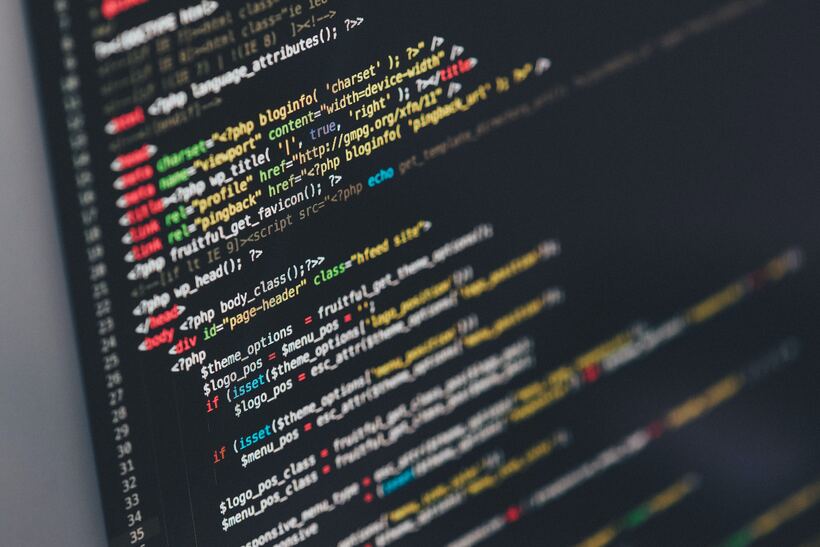
Welcome to the exciting world of AI-powered tools for food quality control and testing! In today’s fast-paced and ever-evolving food industry, ensuring the highest level of quality and safety is paramount. With advancements in technology, traditional methods of testing have been revolutionized by artificial intelligence (AI). These cutting-edge tools are equipped with powerful algorithms that can analyze data faster, more accurately, and on a larger scale than ever before. Join us as we dive into the fascinating realm of AI-powered tools for food quality control and testing, exploring their benefits, challenges, and future possibilities. Get ready to discover how this innovative technology is reshaping the way we ensure top-notch standards in the food industry!
The Need for Advanced Technology in Food Industry
The food industry is constantly evolving, and with it comes the need for advanced technology to ensure food safety and quality. In today’s fast-paced world, traditional methods of food testing and quality control are simply not enough to keep up with the demands of consumers.
One of the key reasons why advanced technology is needed in the food industry is because it allows for faster and more accurate detection of contaminants or other issues that may impact product quality. With AI-powered tools, companies can quickly identify potential risks and take immediate corrective actions to prevent any harm to consumers.
Advanced technology enables real-time monitoring throughout every stage of production. From farm to table, AI-powered tools can track temperature fluctuations, moisture levels, and other critical factors that can affect the freshness and safety of food products. This level of precision ensures that only high-quality products reach consumers’ hands.
As consumer preferences continue to evolve towards healthier options or specific dietary needs such as gluten-free or allergen-free foods, advanced technology becomes crucial in meeting those demands. AI-powered tools enable manufacturers to develop innovative products tailored to these requirements while maintaining taste and texture.
Implementing advanced technology in the food industry also helps reduce waste by optimizing processes and minimizing errors. By utilizing predictive analytics algorithms powered by artificial intelligence (AI), companies can accurately forecast demand patterns, optimize inventory management systems, thus minimizing overproduction or understocking situations.
The need for advanced technology in the food industry cannot be underestimated. It not only enhances efficiency but also improves product safety and quality while meeting changing consumer expectations. As technological advancements continue at a rapid pace within this sector – from robotic automation on production lines right through traceability initiatives – we can expect even more exciting developments ahead!
Types of AI-Powered Tools for Food Quality Control and Testing
AI-powered tools have revolutionized the food industry by providing innovative solutions for quality control and testing. These advanced technologies employ artificial intelligence algorithms to analyze data, identify patterns, and make accurate predictions. Let’s explore some of the different types of AI-powered tools that are being used in the food industry.
One type of AI-powered tool is computer vision technology, which uses cameras or sensors to capture images or videos of food products. The AI algorithms then analyze these visuals to detect defects, such as mold growth or physical damage. This helps in ensuring that only high-quality products reach consumers.
Another type of tool is machine learning models that can predict shelf life and freshness of perishable foods. By analyzing various factors like temperature, humidity, and storage conditions over time, these models provide valuable insights into product quality and help prevent spoilage.
AI-powered sensors are also gaining popularity in the food industry. These smart devices can measure parameters like pH levels, moisture content, and chemical composition accurately and rapidly. They enable real-time monitoring during production processes to ensure compliance with quality standards.
Natural language processing (NLP) technology plays a crucial role in ensuring food safety by analyzing vast amounts of text-based data from sources like customer feedback or regulatory documents. NLP algorithms can extract relevant information about potential hazards or recall incidents more efficiently than manual methods.
Predictive analytics tools use historical data combined with machine learning techniques to forecast trends related to consumer preferences and demand patterns accurately. This helps manufacturers optimize their production processes accordingly while meeting market demands effectively.
These are just a few examples highlighting how AI-powered tools are transforming food quality control and testing procedures within the industry!
Benefits of Using AI-Powered Tools in Food Industry
AI-powered tools have revolutionized the food industry, bringing a plethora of benefits to the table. One major advantage is improved accuracy in food quality control and testing processes. These tools can analyze vast amounts of data quickly and accurately, enabling manufacturers to identify potential issues or contaminants with higher precision than ever before.
Another benefit is increased efficiency. AI-powered tools automate time-consuming tasks such as data collection, analysis, and reporting, freeing up valuable human resources for more critical decision-making roles. This not only saves time but also reduces the chances of errors that could compromise food safety.
These tools enhance product consistency by ensuring uniformity in taste, texture, and appearance across batches. By analyzing various factors like ingredient proportions or cooking times, AI algorithms can provide insights on how to achieve consistent quality standards consistently.
AI-powered tools enable proactive monitoring by detecting anomalies or deviations from set parameters in real-time. This early detection allows for prompt corrective actions to be taken before any compromised products reach consumers’ hands.
These advanced technologies improve traceability throughout the supply chain. By tracking ingredients from farm to fork using techniques like image recognition or barcode scanning during production and distribution processes are made more transparent and accountable.
Lastly but not leastly , AI-powered tools help reduce costs associated with manual labor-intensive tasks while improving overall productivity . With automation at its core , companies can streamline their operations leading to cost savings without sacrificing quality .
The benefits offered by AI-powered tools in the food industry are immense . Improved accuracy , increased efficiency , enhanced consistency , proactive monitoring , improved traceability all contribute towards ensuring high-quality products while reducing operational costs.
Challenges and Limitations of AI-Powered Tools for Food Quality Control and Testing
AI-powered tools for food quality control and testing have undoubtedly revolutionized the way the food industry operates. However, like any technology, they come with their own set of challenges and limitations.
One of the major challenges is ensuring accuracy in detecting contaminants or defects in food products. While AI algorithms are designed to identify anomalies, there can be instances where certain variations go undetected. This could potentially lead to false positives or false negatives, impacting both consumer safety and business reputation.
Another challenge is the initial investment required to implement AI-powered systems. Integrating these tools into existing processes requires financial resources for purchasing equipment, training staff, and maintaining the infrastructure. For smaller businesses with limited budgets, this might pose a significant barrier to adopting this technology.
AI-powered tools heavily rely on large amounts of data for accurate predictions and analysis. Obtaining high-quality data sets that capture diverse factors such as environmental conditions or ingredient variability can be a daunting task for many companies. Additionally, data privacy concerns also arise when sharing sensitive information with third-party providers.
Despite advancements in AI technology over time, it still lacks human intuition and contextual understanding which plays a crucial role in assessing food quality. Certain characteristics like taste preferences or texture evaluations are subjective and require human sensory judgment that cannot yet be fully replicated by machines alone.
Regulatory compliance is another limitation faced by AI-powered tools. As regulations regarding food safety constantly evolve globally across different jurisdictions, keeping up with these updates poses a considerable challenge for developers of these technologies.
Future Possibilities and Advancements in AI-Powered Food Testing
As technology continues to advance at a rapid pace, the future holds exciting possibilities for AI-powered tools in food quality control and testing. Researchers and developers are constantly working on improving existing systems and exploring new ways to harness the power of artificial intelligence in ensuring food safety.
One area that shows promise is the integration of AI with Internet of Things (IoT) devices. This combination could enable real-time monitoring of various parameters such as temperature, humidity, and air quality throughout the entire supply chain. By analyzing data from these sensors, AI algorithms can quickly detect any anomalies or deviations from optimal conditions, allowing for immediate corrective actions.
Another exciting advancement is the use of machine learning algorithms to enhance predictive analytics in food safety. By analyzing vast amounts of historical data on foodborne illnesses and outbreaks, AI-powered systems can identify patterns and risks factors that humans might miss. This proactive approach can help prevent contamination before it occurs by identifying potential sources or suppliers with a higher likelihood of issues.
There is growing interest in using natural language processing (NLP) techniques to analyze textual data related to food safety regulations and standards. By automatically extracting relevant information from documents like FDA guidelines or international standards, AI-powered tools can assist regulatory compliance efforts more efficiently while reducing human error.
However promising these advancements may be, it’s important to acknowledge some challenges and limitations that need attention moving forward. One challenge lies in ensuring the accuracy and reliability of AI models when dealing with complex scenarios or evolving pathogens. Continuous training and validation processes will be essential to keep up with emerging threats.

